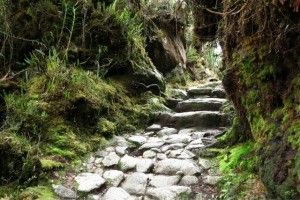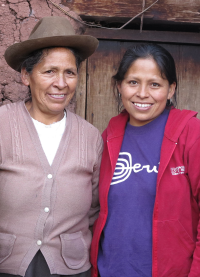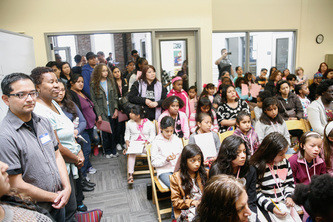 In our final month of travel in South America, I did two things I had never done before, and together they’ve steered me down a path toward bridging the digital divide:
In our final month of travel in South America, I did two things I had never done before, and together they’ve steered me down a path toward bridging the digital divide:
1. hiked the Inca Trail
2. taught someone to use a computer, in Spanish
#1 was hard
The most amazing and physically challenging activity that month was hiking the Inca Trail. I was not super-fit when I left the U.S., but I thought, “That’s ok, by the time we get to Peru, 5 months in, I will be in AMAZING shape.” This, it seems, did not happen. Luckily, we lived up a steep hill in Coya, Peru, and had two weeks of daily workout, climbing 30 minutes uphill to get home, to prepare us for the trail.
I not only survived the trek, but really loved it. I had hours and hours of time to think, to reflect, to wonder if I would make it up the next hill. I experienced the deep history of the Quechua people through our guide, Juan, and our porters (they are the reason I survived – it really helps to have a crew of strong people carrying your things, setting up your tent, and cooking for you). I deepened my respect for the earth (Pachamama) and my reverence for the differences in how we all live.
#2 was harder
 The Inca Trail was physically challenging, but teaching someone how to use a computer was mentally challenging. Both were emotionally rewarding.
The Inca Trail was physically challenging, but teaching someone how to use a computer was mentally challenging. Both were emotionally rewarding.
We made friends in Pisac, Peru. When I told them, “Yo trabajo con computadoras.” (“I work with computers.”), they asked me to build a website to market their rental houses. I said “Si.” There was no budget for VRBO or Airbnb fees, so I used Webs.com to build a static website with “send me an email” as the reservation path. Small glitch: no one knew how to use email – or a computer.
I had only a few days left in Pisac when they asked, so in three intense 2-hour sessions (fit between her responsibilities running a puesta (booth) in the artisanal market and taking care of her two girls under 5), I taught Dina (pictured here with her mom) how to get online and manage her email.
Dina comes from a long line of smart, tough, Quechuan women. For example, when I worried that Dina’s mom might get hurt picking cactus fruit for us, Dina said, “No te preocupes, las espinas tienen miedo de mi madre.” (“Don’t worry, the thorns are afraid of my mother.”). Dina was tough, but could she use a mouse?
We sat together in the Internet tienda (a storefront with banks of computers…all running IE6!) while I attempted to explain, in my limited Spanish, the mysteries that we all take for granted:
- double-clicking (not a natural human action)
- typing this exact string of characters in this box at the top gets you to a website (“no, not that box in the middle…typing there will ALSO get you to a website and you don’t have to type the exact string because it does a search and … well, let’s cover that next time”)
- the immediacy of sending email (“look, I hit send and now it is there in your inbox”)
- why you shouldn’t tell people your password or click on links from people you don’t know (“gente mala” = bad people)
- the omniscience of applications (“you start typing my name and then Yahoo *knows* you want to send the email to me and shows you my name in a list, so you just pick my name”)
- how to transfer photos from a memory card and attach one to your email (this one is really really hard to explain if computer navigation is new and the folder metaphor is not familiar)
Dina was an excellent student and a quick learner. She insisted on repeating the steps herself, over and over, until she had it nailed. Now that I am home, I have a new pen pal, who happens to be a successful, slightly more tech-savvy, business woman. More importantly, I have a new perspective on the transformative power of technology and of developers doing good.
Dina is 32 years old. In the cities I have lived in in the U.S., it would be hard to find a 32 year old who hadn’t used a computer, but in Pisac, Peru, and the smaller Quechuan village of QosQo Ayllu, where Dina grew up, it was hard to find anyone who had. I came home with a nagging question: What about all of the other Dinas?
How Can You Make a Difference?
I started googling for organizations that help women learn technology and found a number of organizations in the U.S. looking to close the digital divide in our communities, and across the world. I have just started to learn about them, and my goal this year is to volunteer at at least one. Some are catching it early, with programs for kids. Some target high-school and college-age young adults. And some target the Dinas – women who for some reason missed the chance to learn technology in school.
Recently, one organization hit a cross-section: “Black Girls CODE, in partnership with the Latino Startup Alliance hosted a bilingual coding workshop on Saturday, May 25th, 2013 with San Francisco community partner MEDA. There were over 70 girls in attendance from all over the bay area and more than 30 parents who participated in the parallel track of workshop on financial literacy, digital literacy, and a technology career panel.” (from http://www.blackgirlscode.com/bgc-in-action.html)

I wish I had been able to participate!
Here’s a short list of organizations on my radar. I am hoping to bring a some of the young adults from a few of these to Dreamforce ’13, if the logistical stars align. Please post others you recommend in the comments.